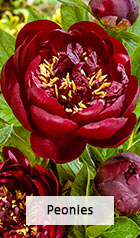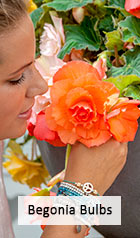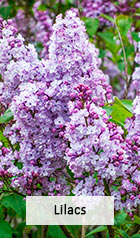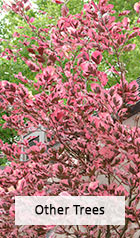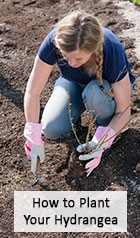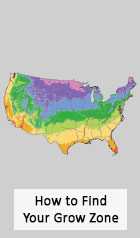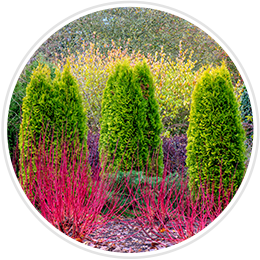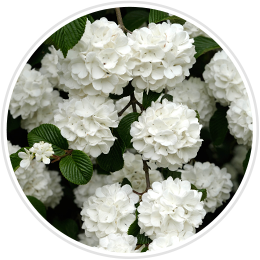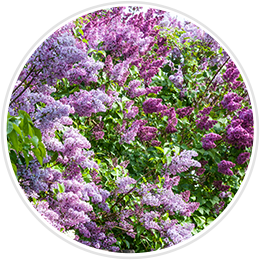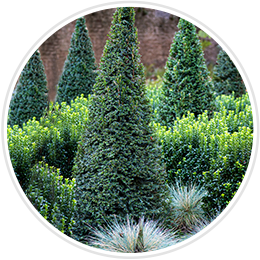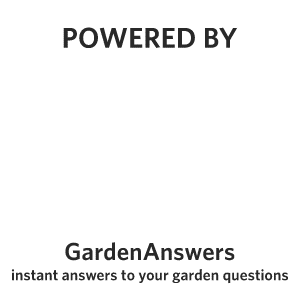- Fall Preview
- Perennials
Close X
Reliable color year after year.
- Bulbs
Close X
Fill your summer with blooms.
- Clematis & Vines
Close X
Provide ambiance and romance.
- Shrubs
Close X
Habitat, color & design possibilities.
- Trees
Close X
A gift for the next generation.
- Patio Orchard
- Fruits
- Tools & Décor
Close X
The right tools make gardening a pleasure.
- Spring Clearance
- Gardening Resources
Close X
Tips and tricks for easy, beautiful gardens.
Hedge Plants from Spring Hill Nurseries
Spring Hill began as a small nursery in 1849. By 1930, we had become a blossoming garden supply mail-order business. We proudly bring our customers plants of the highest quality, always searching for unique finds and well-performing varieties to brighten yards and gardens. We put just as much care into selecting our hedges, with a wide selection of different sizes and types available.
Learn more about our hedges for sale and proper care below.
Choosing the Right Hedges
Beyond simply decorating the landscape, privacy hedges provide structure and shape to your yard, turning your outdoor space into an enclosed or semi-enclosed living area or private garden. Privacy hedges can act as snow fencing to reduce shoveling along your walks and driveways, and can muffle the sound of passing traffic. And, of course, privacy hedges provide a welcome distance from neighbors as well as blocking light from nearby streets and homes.
Rather than using wooden or metal fencing, consider a living fence to add an environmentally-friendly, aesthetically pleasing element to your home, or to create a beautiful outdoor living area. Not sure what kind of hedge might work best as a natural fence? Consider the following!
Flowering Hedges
Flowering hedges add seasonal color to your landscape and bring pollinators and birds to your garden party as well. Flowering shrubs make wonderful privacy fences in romantic tea gardens, and soften more modern spaces with their blossoms and scent. While flowering hedges are often selected for their bloom times and floral display, most flowering hedges also have thick, attractive foliage that changes appearance with the seasons. Choose flowering hedges that complement your beds and borders, or mix and match floral shrubbery to ensure that something is always blooming in the background!
Spring-flowering shrubs produce some of the largest flowers in the shrubbery world, and, with deadheading, they can remain tidy and ready to reflower for weeks. Azaleas, forsythia, viburnum and lilac are among the early bloomers that welcome springtime to your landscape. Later in the season, hydrangeas and butterfly bushes brighten the warmest months.
Winter Hedges
Winter-friendly evergreen hedges stay green, or semi-green, through the cold season. Arborvitae and other conifer hedges are amazing for thick, year-round windblock capabilities and unwavering color. However, even deciduous shrubs can provide winter interest. Consider burning bush shrubs, which turn a vibrant red in the fall before leaving attractive, sturdy branches bare. Or, leave the flower heads on your hydrangeas or lilac bushes for attractive, shapely points of interest. Winter hedges provide attractive cover during the winter season, and they can provide shelter from the cold for birds..
Pollinator-Friendly Hedges
Blooming shrubbery isn't only attractive to passerbys. Pollinator-friendly hedges attract bees, butterflies and hummingbirds that assist with pollination of your other ornamentals, as well as vegetables and produce plants. Pollinator hedgerows can be beneficial to your entire garden. Try mixing floral shrubbery with evergreens, which provide nesting material to caterpillars. To maximize your butterfly-friendly hedge, add native perennials to the mix.
Deer-Resistant Hedges
Hedges can be some of the hardiest plantings, but, as they serve as the entry point to your landscape, they may be the first to be grazed by wildlife. Consider evergreens or other deer-resistant hedges to deter wildlife from entering your garden in the first place. Many cold-hardy conifers are less desirable to deer, and deciduous shrubs with thorns or hard leaves also deter wildlife.
Border Hedges
Hedges aren't only useful in tall windscreens and roof-high privacy fencing. Shorter hedges can be useful in creating borders, used in the back of beds, and in delineating areas of the garden. Some of our favorite bushes, including dwarf shrubs like mockorange, lilac, and even blueberry shrubs, make beautiful border hedges or work well in trios or single plantings.
Hedges: Getting the Most out of Your Purchase
A hedgerow can be a rewarding investment, especially if you maintain your hedges annually. From planting through maintenance, many varieties of border hedges, shrubs, and privacy hedges are easy to care for and offer years of enjoyment.
Getting Started With Hedges
Find a hedge that fits your location, climate, and needs. As you choose a hedge, consider:- Your purpose for installing a hedge, and your aesthetic preferences. Evergreens and thickly-branched hedges will provide top-notch privacy, but may be too overbearing in the center of a landscape. Floral border hedges won't offer as much protection from drifting snow, but may be an appropriate setscape for a patio or small garden. Choose from windblocks or decorative hedges, informal or tidier looks, and consider how these plants will fit into the rest of your yard.
- Spacing. Hedges grow not only up but out. Consider how many plants you need to fill in your hedgerow, and how close you can safely plant to buildings, power lines, and other plants.
- Grown height. Some hedges and arborvitae can reach heights of over twenty feet, and can dwarf smaller trees or one-story houses. Think about height and width for the lifetime of your hedge.
- Growing conditions. Do you have rich soil, or is your soil sparser? What kind of sun and climate exists in your planting zone?
- Care. Do you want a hedge that you'll need to prune each year, or are you looking for a set-and-forget natural fence? Read the care instructions for each of the plants you're considering before making a final choice.
With so many unique hedge plants available for shipping, you'll be able to find a plant that works for your landscape, budget, and style. Many hedges are best planted in fall, so your end-of-summer garden cleanup is a perfect time to start dreaming of the next season.
When to Plant Hedges
Planting time depends upon the type of shrub, but most shrubs, trees, and other nursery stock perform best when planted in fall. That timing allows their roots to settle over the cold winter before performing the harder work of growing the above ground portion up and out. Evergreens are particularly successful when planted after the growing season, but before frost hits. Some types of flowering shrubs, however, should be planted in spring along with your favorite perennials.
How to Plant Hedges
Planting hedges requires a bit of forethought, but is an easy weekend task. The key pieces of planting include:
- Selecting a location. Even if you've already measured your yard before choosing a shrub to purchase, measure again to make sure that your hedges are spaced appropriately for the plants' mature size. Ensure that you have the correct hedges for your sun exposure and climate—most sun-loving hedges need at least six hours of sun per day.
- Once you're ready to plant, rake leaf litter and any mulch away from the planting site, and use a spade or shovel to clear grass. You'll need a planting area about twice as wide as the pot in which your shrub arrived.
- Dig a hole about twice as wide as the container, and just as deep. Use a measuring stick or shovel handle to ensure that the hole is about as deep as the shipping pot is tall.
- Remove the shrub from the container gently, without pulling on leaves, needles or branches. If the roots are pot bound, gently break them apart.
- Set the plant, and water it in. Then, backfill the hole, watering frequently to remove any pockets of air and to ensure that the plant is set securely. Once it is set, water again thoroughly.
- In fall plantings, you'll need to mulch around your plant, using an inch or two of mulch to create an adequate layer of protection.
- Repeat, at the right spacing, for as many plants as are in your hedgerow.
How to Trim Hedges
The following are some basic principles for trimming hedges, but your plants—and your personal style—may vary.
For large privacy hedges: Large hedges, such as arborvitae and cedar hedges, may require the use of a gas powered tool, or at least an electric trimmer. Fast-growing hedges like evergreen hedges can be pruned in the spring for shape and size maintenance, and can be cut back to about two-thirds of their original size. Start at the base of the tree and prune upward.
For flowering hedges: To best trim flowering hedges, you need to know whether they flower on "new wood," or new growth, or "old wood," the growth of previous seasons. If your plant blooms on new wood, you can prune it back after flowering nearly as much as you want. Plants that bloom on old wood tend to grow more slowly, and you'll need to preserve existing wood to enjoy blooms in the next season, so remove only dead or crossed branches.
For border hedges: For smaller border hedges, such as boxwoods, use a pair of hand shears to remove dead wood and thin out the plants. Start at the top, and keep your desired shape in mind as you trim. If the shrub needs to be thinned, use a few cuts to remove deep-seated shoots and dead branches first, then remove healthy wood sparingly. Border hedges may be trimmed in spring or fall.
Trimming is the main area of maintenance required for privacy hedges—and it really is a pretty simple task. With just a little upkeep, you can enjoy your hedges, and the benefits that come with them, for years or decades.
A fast-growing hedge row starts with the roots!
Our mature plants come from Holland, Michigan where the soil is ideal for growing healthy root systems for hedges and shrubs; an advantage you won't find at other retailers.
- Grown in healthy sandy loam with low pathogen rate.
- Larger overall root systems that aren't "pot bound".
- More fine root hairs for increased nutrient uptake and faster establishment.
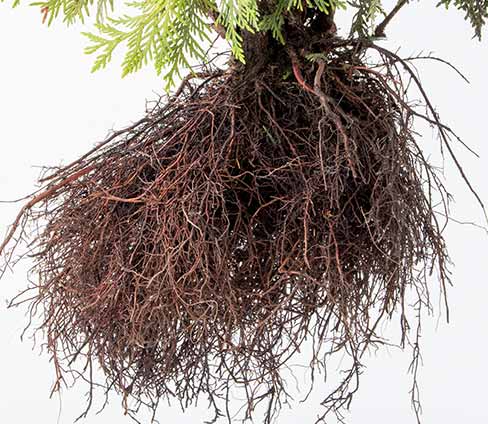
This is what healthy shrub roots look like. Our fibrous, field-grown root systems acclimate quickly to their new environment thanks to hundreds of fine root hairs that optimize nutrient uptake.
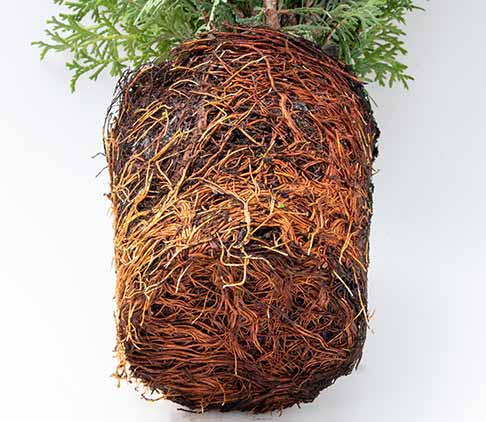
This is what pot-bound roots look like. If you've ever bought shrubs at your local nursery or home improvement store, you may have seen this before. Stuck in a small pot, roots have no place to go and take longer to recover after planting.
Spring Hill's Ready, Set, Hedge® plants are grown in the rich, healthy soil of Holland, Michigan
For decades growers have boasted over Michigan soil, and for good reason. The rare, nutrient rich sandy loam just inland from Lake Michigan, produces some of the best performing trees and shrubs you can find.
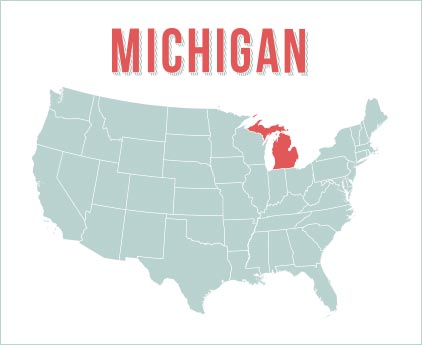
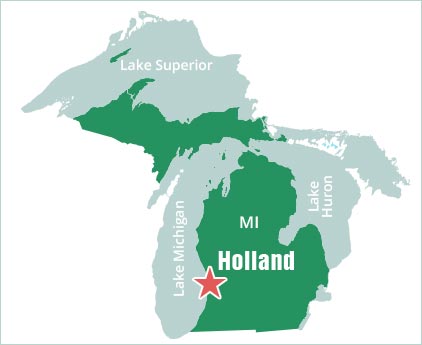
More reasons to try Ready, Set, Hedge®
Planting sizes up to 4 ft. tall.
We have plant sizes to fit every landscape need and every budget. Our largest sizes arrive with years of growth already behind them--perfect for creating instant privacy, beauty or property boundaries.
Money-saving multi-packs.
When planning a proper hedge, consider the space you want to fill and the spread of your chosen shrub variety. Usually, multiple plants are required. We created our 3-, 5- and 10-plant bundles with this in mind--the more you buy, the more you save.
Shipped right to your door.
No need to borrow a truck or put down a tarp in the back of your SUV. No spilled dirt when the pots in the back inevitably tip over on the ride home. Our healthy shrubs ship right to your door at the perfect time for planting in your area.



